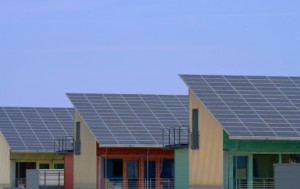The LEED (Leadership in Energy and Environmental Design) standard was a much needed imprimatur for unifying all the players in the green building industry. It has spawned more than 14,000 green building projects worldwide since its unveiling in 2000.
 But critics have long argued that the LEED system is broken and doesn’t really live up to its eco-friendly mantle. They cite meager energy saving improvements and an easy-to-game point system that rewards individual features rather than a building’s total sustainability as just a few of its flaws. More significantly, LEED accreditation is awarded based on hypothetical estimates of energy modeling that was done at the design phase rather than the building’s actual energy performance when it’s in use.
But critics have long argued that the LEED system is broken and doesn’t really live up to its eco-friendly mantle. They cite meager energy saving improvements and an easy-to-game point system that rewards individual features rather than a building’s total sustainability as just a few of its flaws. More significantly, LEED accreditation is awarded based on hypothetical estimates of energy modeling that was done at the design phase rather than the building’s actual energy performance when it’s in use.
Last week, the US Green Building Council (USGBC) took a step toward addressing its critics by injecting performance measurement and accountability into the latest version of the LEED standard. With LEED v3, building owners will have to regularly report on how much energy and water their buildings truly consume as a precondition to ongoing LEED certification. The new requirement aims to close the “performance gap” between imaginary and actual conservation.
The USGBC says the new rules will deliver two key benefits. First, the insight gleaned from the building performance data will help improve future versions of the standard by identifying which LEED specs work and which don’t. Secondly, they theorize that forcing certified building owners to report energy use on an ongoing basis will cause them to knuckle down and reduce the amount they use.
 Justin Moresco at GigaOM’s Earth2Tech blog added that the new rule could also boost demand for products from companies that develop energy-related technologies for buildings. And I see great potential for integrating Smart Grid capabilities into the LEED process. That’s because one way to meet the new requirement is to let the USGBC monitor a building’s performance directly using the local utility as its information gateway. Smart meters, sensors and Smart Energy management systems will be essential to making this happen.
Justin Moresco at GigaOM’s Earth2Tech blog added that the new rule could also boost demand for products from companies that develop energy-related technologies for buildings. And I see great potential for integrating Smart Grid capabilities into the LEED process. That’s because one way to meet the new requirement is to let the USGBC monitor a building’s performance directly using the local utility as its information gateway. Smart meters, sensors and Smart Energy management systems will be essential to making this happen.
While the new rules are a small step towards improving a flawed LEED system, establishing accountability is one of the proven ways to turn around an under-achiever.